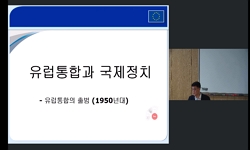A technique for a wear volume calculation is improved and verified in this research. The wear profile data measured by a surface roughness tester is used. The present technique uses a data flattening, the FFT and the windowing procedure, which is used...
http://chineseinput.net/에서 pinyin(병음)방식으로 중국어를 변환할 수 있습니다.
변환된 중국어를 복사하여 사용하시면 됩니다.
- 中文 을 입력하시려면 zhongwen을 입력하시고 space를누르시면됩니다.
- 北京 을 입력하시려면 beijing을 입력하시고 space를 누르시면 됩니다.
https://www.riss.kr/link?id=A105633484
-
저자
김형규 ; 이용호 ; Kim, Hyung-Kyu ; Lee, Young-Ho
- 발행기관
- 학술지명
- 권호사항
-
발행연도
2005
-
작성언어
English
- 주제어
-
자료형태
학술저널
-
수록면
21-27(7쪽)
- 제공처
-
0
상세조회 -
0
다운로드
부가정보
다국어 초록 (Multilingual Abstract)
A technique for a wear volume calculation is improved and verified in this research. The wear profile data measured by a surface roughness tester is used. The present technique uses a data flattening, the FFT and the windowing procedure, which is used for a general signal processing. The measured value of an average roughness of an unworn surfnce is used for the baseline of the integration for the volume calculation. The improvements from the previous technique are the procedures of the data flattening and the determination of a baseline. It is found that the flattening procedure efnciently manipulates the raw data when the levels of it are not horizontal, which enables us to calculate the volume reasonably well and readily. By comparing it with the weight loss method by using artificial dents, the present method reveals more volume by aroung 3~10%. It is attributed to the protruded region of the specimen and the inaccuracy and data averaging during the weght loss measurement. From a thorough investigation, it is concluded that the present technique can provide an accurate wear volume.




 ScienceON
ScienceON






